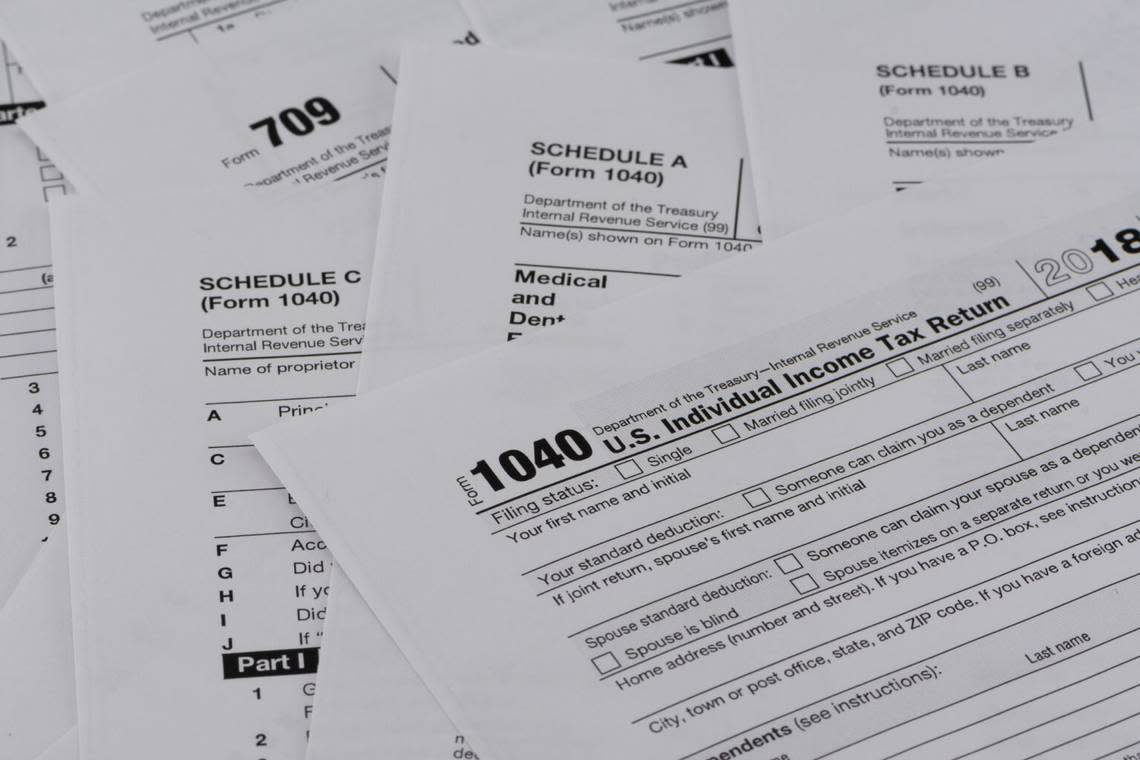‘Don’t wait on hold’ for IRS this tax season, agency says. Here are tips to help you through

As millions are preparing to file their taxes, the IRS issued a few reminders.
You have to file and pay taxes by April 15. The IRS expects more than 128.7 million individual tax returns to be filed.
Here’s what you need to know about the documents you’ll need, what income counts, how to get your refund and how to get help.
Get your paperwork together
To make sure you’re filing a complete and accurate tax return, gather all your important documents first. That way, you can avoid missing out on a deduction or tax credit. Plus, you’ll avoid mistakes that can slow down how long it takes to get your refund.
You should have this information when filing your taxes:
Social Security number (for everyone on the return).
Bank account and routing numbers.
Tax forms such as W-2s, 1099s, 1098s and other income documents or records of digital asset transactions.
Form 1095-A, Health Insurance Marketplace statement.
Any IRS letters citing an amount received for a specific tax deduction or credit.
What income counts?
Outside of your income from a 9-to-5 role, you need to report income from goods created and sold on online platforms, investments, part time or seasonal work, self-employment or other business activities, and services provided through mobile apps.
How do you get your refund fast?
The IRS said filing electronically with direct deposit is the quickest way to get your refund.
While most refunds are issued in less than 21 calendar days, the agency warns against relying on receiving your refund by a certain date. Don’t rely on the refund for a big purchase or important bill.
If you file an amended return or mail it in, it could take four weeks or longer.
You can check your refund status by using Where’s My Refund on IRS.gov or the IRS2Go app. It will appear around 24 hours after you file a current-year return electronically. You’ll need your Social Security number or individual taxpayer ID number, your filing status, and the exact amount on your return.
Need help?
Depending on your situation and comfort with filing your own tax return, you can file on your own, use an online filing service or hire a tax professional. If you’re looking for a professional, visit the IRS Directory of Federal Tax Return Preparers with Credentials and Select Qualifications.
If you earned $79,000 or less in 2023, you can use IRS Free File.
If you made more than that — and are comfortable preparing your own taxes — you can still use the Free File Fillable Forms.
Depending on what types of income, credits and deductions you’re reporting, residents of Arizona, California, Florida, Massachusetts, Nevada, New Hampshire, New York, South Dakota, Tennessee, Texas, Washington state and Wyoming could be eligible for IRS Direct File. That’s a pilot program the IRS is currently rolling out, but it’s not yet fully open to the public.
The IRS offers help online, by phone at 800-829-1040 or in person at an IRS Taxpayer Assistance Center.
“Don’t wait on hold when calling the IRS,” the agency wrote in a news release. To avoid a hold time — which the IRS says can average four minutes during filing season or 11 minutes after filing season — you can use online resources at IRS.gov/help/tools. You can also use the Interactive Tax Assistant tool or “Let us help you” resource.
What is The Sum?
The Sum is your friendly guide to personal finance and economic news.
We’re a team of McClatchy journalists cutting through the financial jargon so you know how these issues impact your life. We verify information from diverse sources and keep the facts front-and-center, making finance and economic news add up for you.
Ready to take the first step to getting your finances under control? You can sign up for our five-week budgeting newsletter at thesum.news.

